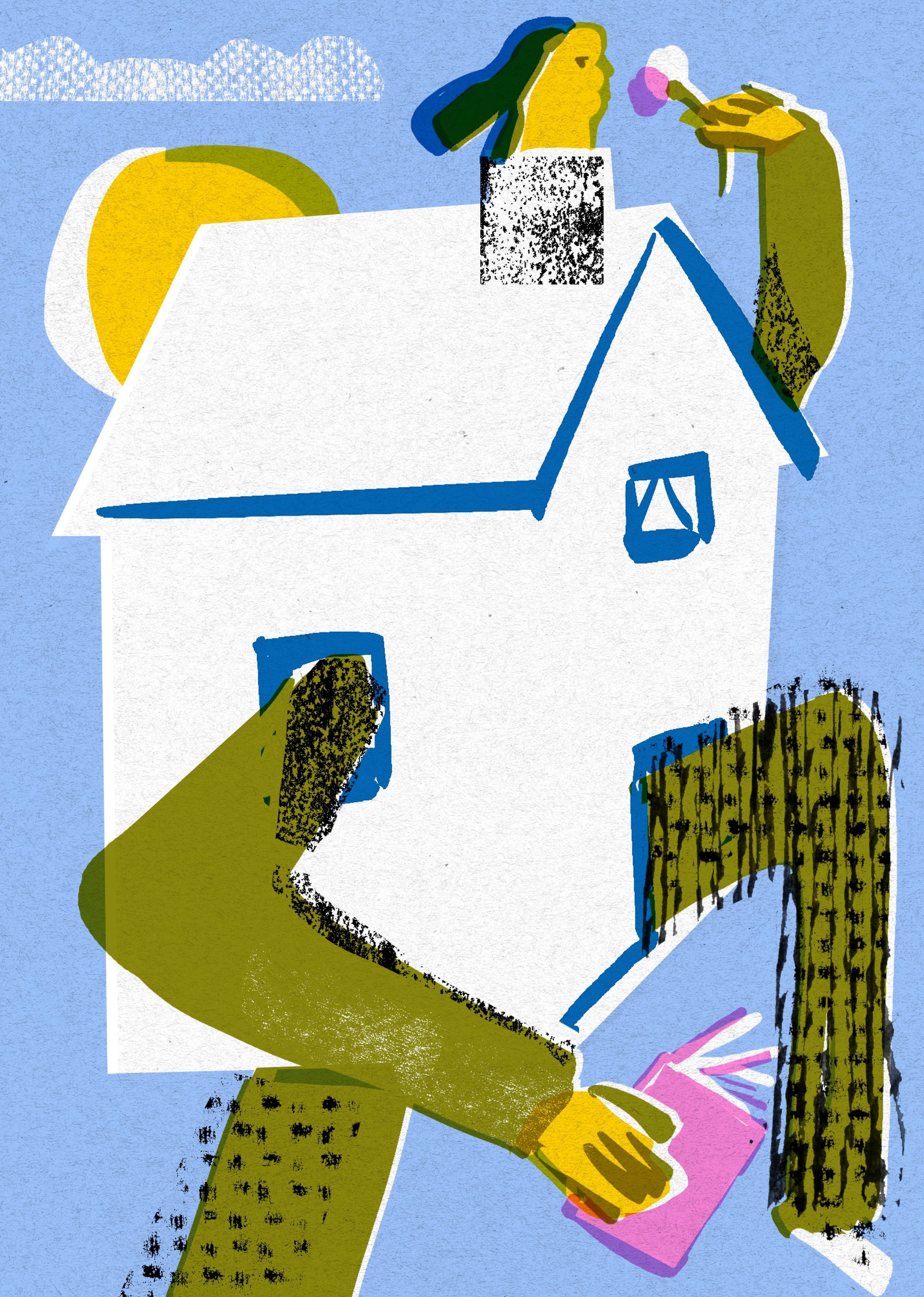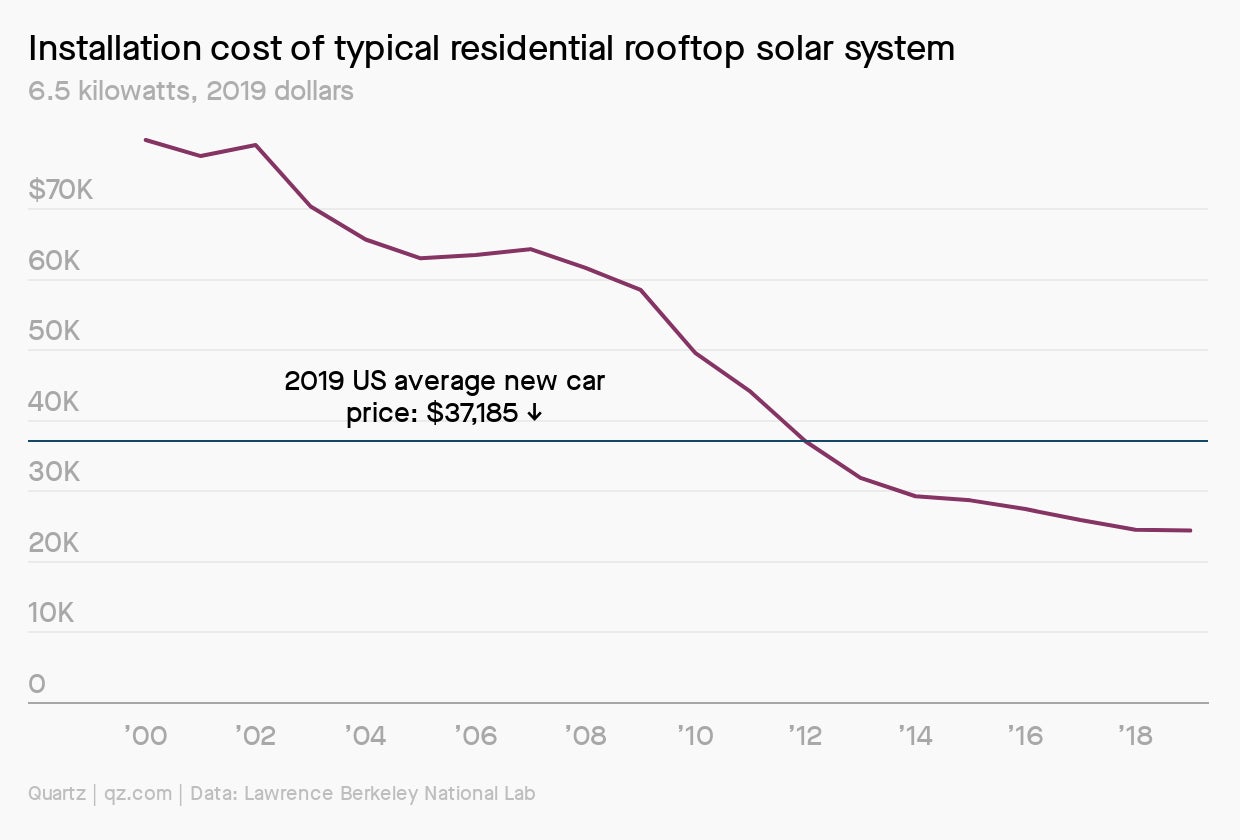For members: Finding happiness at home
[qz-guide-hero id=”434621392″ title=”💡 The Big Idea” description=”People are paying more attention than ever to crafting healthier, happier living spaces.”]


[qz-guide-hero id=”434621392″ title=”💡 The Big Idea” description=”People are paying more attention than ever to crafting healthier, happier living spaces.”]
🤔Here’s why
1️⃣ Frustrated home-dwellers can access science-backed ways to feel happier in their space. 2️⃣ Home improvements are especially powerful if they involve nature. 3️⃣ Designers are concocting creative solutions to help people live better lives at home. 4️⃣ Residential solar power is finally within reach, 5️⃣ and the smart speaker race is determining the smart home of the future.
✍ The details
1️⃣ Experts have found science-backed ways for people to be happier in their homes.
The pandemic has forced millions of people to spend many more hours than they’d like in spaces that are simply good enough. In many cases, that’s prompted people to buy new homes or renovate their existing ones. For those frustrated by their spaces, experts whose work sits at the intersection of design and psychology can offer insight into the science-backed ways to craft a happier home.
Reduced clutter, ample natural light, wall color, visible wood grain, well-placed lamps—these are all elements of our homes that play into our underlying psychology, and can make us feel warm, relaxed, and productive. Photos on the walls can offer regular reminders of what’s important to us. A home’s layout, too, can help families function better by creating shared and private spaces.
2️⃣ Home improvements are especially powerful if they involve nature.
Few would argue against the idea that gardens are good for our health and well-being. So it comes as no surprise that Covid-19 has inspired a revival in gardening, with many working out their anxieties in backyard plots, potted plants, or herb-lined window sills. Confined to our homes with limited avenues to connect with others, seeing something blossom in our immediate surroundings can provide a measure of happiness. We asked British landscape architect and author Clare Cooper Marcus, who has developed evidence-based recommendations for designing therapeutic gardens, for advice.
3️⃣ Designers are concocting creative solutions to help people live better lives at home.
By summer 2020, Hong Kongers were spending more time than ever cooped up at home. Marisa Yiu, an architect and the co-founder and executive director of the nonprofit Design Trust, thought she could help. In May, Yiu launched a design initiative called “Critically Homemade.” It was an open invitation to designers to try their hand at designing a small homemade prototype to foster intergenerational play and wellbeing for families stuck at home, and to encourage collaborative and creative thinking, even in isolation.
Dozens of prototypes arrived at Yiu’s studio over the course of several weeks: building blocks made from wood scraps, with which people can playfully make animal figures and chopstick holders; baked, edible cutlery made of flour to reduce plastic waste from all those takeout meals; ice molds in the shape of calligraphic Chinese characters for homemade cocktails.
Yiu tells Quartz about her inspiration for the challenge, what it taught her, and what home design project she’s dying to undertake herself.
4️⃣ Residential solar power is finally within reach.
Just a few years ago, getting solar panels on a residence was cost-effective for only a minority of wealthy homeowners. Now, as the price of panels plummets thanks to technical innovations and more efficient supply chains, the cost of powering a home with solar is low enough to shake up the fundamental value proposition of solar in ways that should benefit homeowners by allowing them to reap more of solar’s financial rewards, at lower cost. And it’s helping cut the country’s carbon footprint—the federal government projects solar to be by far the fastest-growing source of electricity in 2021.

5️⃣ The smart speaker race is determining the smart home of the future.
Amazon, Google, and Apple are investing billions of dollars to develop devices that today regularly lose them money. Today, they hold some market power as a way to search the web or buy products. But the companies are really betting big on the future; smart speakers are expected to be a future-dweller’s main point of contact with their automated home. The firms are betting that the gadgets will become the conductors of a symphony of devices that run our future homes, and important gatekeepers for consumers’ search and shopping habits.
📣 Sound off
What steps might you take to make your home happier?
In last week’s poll for our field guide on the business of mindfulness, 40% of you said you were at an intermediate stage of your mindfulness journey. We’re impressed!